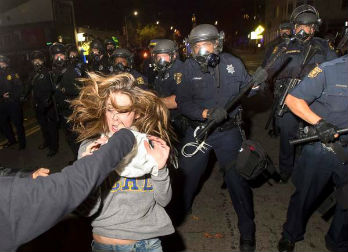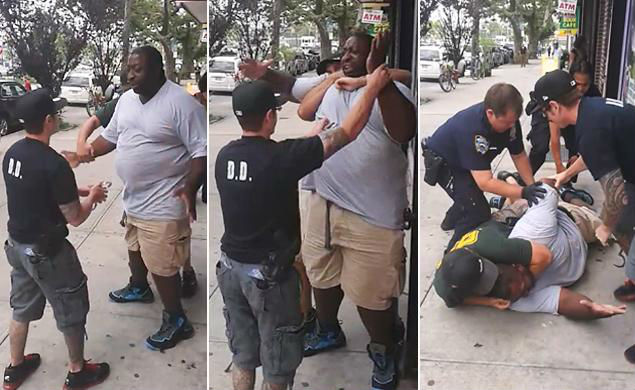
“We need myths that will identify the individual not with his local group but with the planet.¹”
In light of the recent protests calling attention to the deaths of unarmed black men at the hands of police urging lawmakers to take action, I recall photos of fishermen in small boats braving huge military ships during the U.S. Navy’s occupation of the Island of Vieques (part of the archipelago of Puerto Rico) that first appeared publicly in February 6th, 1978. From fragile boats fishermen threw stones to military ships that were immune to them.

The first general reaction was one of ridicule and derision toward the fishermen’s protest. Yet those protests from the fishermen were among the signs of dissatisfaction with the presence of the Navy, which possessed 2/3 of the island of Vieques and was using it freely and negligently for military practices since 1941.
Those fishermen and the ones that followed were a David against a Goliath. They bravely faced an idealized, mythologized power by simply asserting their right to use their means of survival and not be interrupted in their community by the presence of the Navy vessels.
The seed that started to sprout with those fishermen protesting about an injustice that what was not taken care of continued to grow in rhizomatic ways and culminated in a march against the presence of the Navy in Vieques. When Puerto Rican David Sanes died from a bomb dropped by the Navy, the residents of Vieques spoke openly about many other lives that the bombings had also taken. Suddenly, every protester became David Sanes and all the dead joined the fight. Many sectors of the Puerto Rican people, united in their strength, gave rise to a consistent and committed international presence that caused President Bush to remove the Navy from Vieques on May 1st, 2003.
We know that protesting and demanding justice for 18-year-old Michael Brown, Eric Garner, Akai Gurley, and many other black lives have triggered some of the following questions.
How is a person not used to participating in protests moved to join the crowd of protesters and partake in the process? What type of process could take place in a group of individuals that would allow them to develop consistency and commitment in a protest? How can the protesters anticipate the development of destabilizing strategies by the other side that could label the protests violent and turn them ineffective?
Our intuition – of what is right and what is wrong – needs to be guided by a consensus committed to achieving a consistently fair-minded, united goal. The question is how we can achieve a shift in consciousness that will allow a concentration of force and impact as effective as the stone thrown by David against Goliath, allowing us to identify and defeat the monsters we face.
“Whether you call someone a hero or a monster is all relative to where the focus of your consciousness may be.²”

Notes:
¹ Joseph Campbell. The Power of Myth
² Joseph Campbell. The Power of Myth. Ibid.
Tammara Bannister says
It is a very thought provoking article. I have the pleasure of having ms Ortega as my Psychology teacher at NYCI. As in this article in class she opens up our thought pattern and gets us to think in depth.
Elijah Claiborne-Bey says
Thank you for this information that you bring, this type of thing has been going on for centuries and its not going to end until a new government which corporates true freedom instead of this fake judicial process that doesn’t benefit anyone but the elite who run this global system, I appreciate you for this message!!
Ashley Zaccaro says
Very beautifully written article. I think it’s important to notice these patterns in our world. Thank you for the powerful and inspiring message.
Elizabeth Cary says
As always Ms. Ortega writes words that are thought provoking. Her words dance out of the page at you. She know her HIS-story and you get that ah-ha moment. A fine scholar and writer. I am glad to know she is my friend.